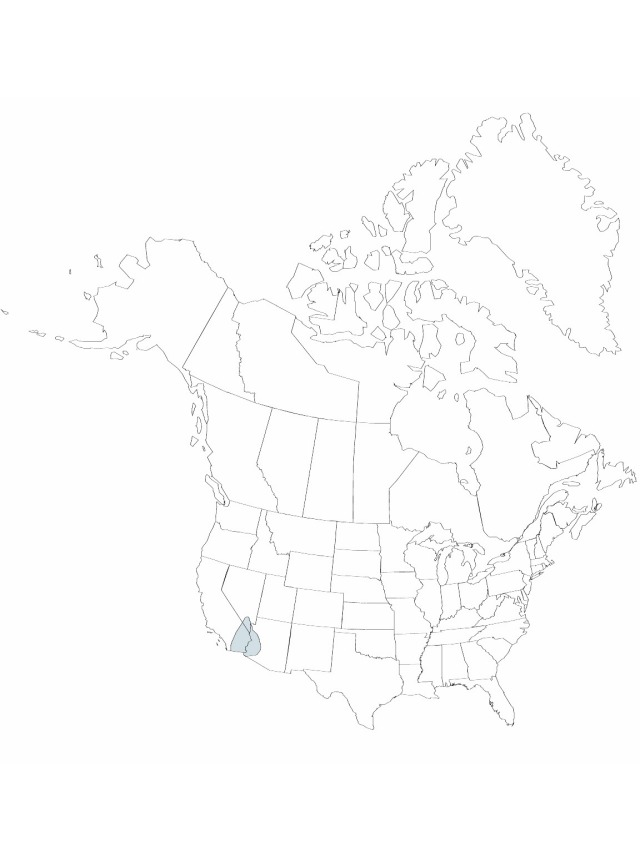Difference between revisions of "Washingtonia filifera"
Bot. Zeitung (Berlin) 37: 61. 1879.
FNA>Volume Importer |
FNA>Volume Importer |
||
| Line 15: | Line 15: | ||
|name=Neowashingtonia filifera | |name=Neowashingtonia filifera | ||
|authority=(Linden) Sudworth | |authority=(Linden) Sudworth | ||
| − | }}{{Treatment/ID/Synonym | + | }} {{Treatment/ID/Synonym |
|name=Pritchardia filamentosa | |name=Pritchardia filamentosa | ||
|authority=H. Wendland ex Fenzi | |authority=H. Wendland ex Fenzi | ||
| − | }}{{Treatment/ID/Synonym | + | }} {{Treatment/ID/Synonym |
|name=Washingtonia filamentosa | |name=Washingtonia filamentosa | ||
|authority=(H. Wendland ex Fenzi) Kuntze | |authority=(H. Wendland ex Fenzi) Kuntze | ||
| − | }}{{Treatment/ID/Synonym | + | }} {{Treatment/ID/Synonym |
|name=Washingtonia filifera var. arizonica | |name=Washingtonia filifera var. arizonica | ||
|authority=(O. F. Cook ex Annon.) M. E. Jones | |authority=(O. F. Cook ex Annon.) M. E. Jones | ||
| − | }}{{Treatment/ID/Synonym | + | }} {{Treatment/ID/Synonym |
|name=Washingtonia filifera var. typica | |name=Washingtonia filifera var. typica | ||
|authority=M. E. Jones | |authority=M. E. Jones | ||
| Line 43: | Line 43: | ||
|distribution=Ariz.;Calif.;Nev.;Mexico (Baja California). | |distribution=Ariz.;Calif.;Nev.;Mexico (Baja California). | ||
|discussion=<p>L. H. Bailey (1936) cited S. Watson, not H. Wendland, as the combining authority of this species, believing that Wendland did not explicitly make the new combination. The combination was made, however, by the journal editor, Anton de Bary, in the index to the volume, appearing on page (column) LXI. Hence, de Bary, not Watson, is the combining author (J. L. Strother, pers. cComm.).</p><!-- | |discussion=<p>L. H. Bailey (1936) cited S. Watson, not H. Wendland, as the combining authority of this species, believing that Wendland did not explicitly make the new combination. The combination was made, however, by the journal editor, Anton de Bary, in the index to the volume, appearing on page (column) LXI. Hence, de Bary, not Watson, is the combining author (J. L. Strother, pers. cComm.).</p><!-- | ||
| − | --><p>Naturalized populations of this species were reported at four sites in Nevada (J. W. Cornett 1987) and in Death Valley National Monument, California (J. W. Cornett 1988). L. R. McClenaghan and A. C. Beauchamp (1986) found low genetic variation among populations of Washingtonia filifera. V. J. Miller (1983) discussed the history and setting of W. filifera in Arizona.</p><!-- | + | --><p>Naturalized populations of this species were reported at four sites in <i>Nevada</i> (J. W. Cornett 1987) and in Death Valley National Monument, California (J. W. Cornett 1988). L. R. McClenaghan and A. C. Beauchamp (1986) found low genetic variation among populations of <i>Washingtonia filifera</i>. V. J. Miller (1983) discussed the history and setting of <i>W. filifera</i> in Arizona.</p><!-- |
--><p>Of conservation concern.</p> | --><p>Of conservation concern.</p> | ||
|tables= | |tables= | ||
| Line 83: | Line 83: | ||
|publication year=1879 | |publication year=1879 | ||
|special status= | |special status= | ||
| − | |source xml=https://jpend@bitbucket.org/aafc-mbb/fna-data-curation.git/src/ | + | |source xml=https://jpend@bitbucket.org/aafc-mbb/fna-data-curation.git/src/8f726806613d60c220dc4493de13607dd3150896/coarse_grained_fna_xml/V22/V22_87.xml |
|subfamily=Arecaceae subfam. Coryphoideae | |subfamily=Arecaceae subfam. Coryphoideae | ||
|tribe=Arecaceae tribe Corypheae | |tribe=Arecaceae tribe Corypheae | ||
Revision as of 17:00, 18 September 2019
Stems massive, to 1.5 m 100–150 cm diam. 2n = 36.
Phenology: Flowering spring–summer.
Habitat: Native to desert washes, seeps, and springs where underground water is continuously available
Elevation: 100–1200 m
Distribution

Ariz., Calif., Nev., Mexico (Baja California).
Discussion
L. H. Bailey (1936) cited S. Watson, not H. Wendland, as the combining authority of this species, believing that Wendland did not explicitly make the new combination. The combination was made, however, by the journal editor, Anton de Bary, in the index to the volume, appearing on page (column) LXI. Hence, de Bary, not Watson, is the combining author (J. L. Strother, pers. cComm.).
Naturalized populations of this species were reported at four sites in Nevada (J. W. Cornett 1987) and in Death Valley National Monument, California (J. W. Cornett 1988). L. R. McClenaghan and A. C. Beauchamp (1986) found low genetic variation among populations of Washingtonia filifera. V. J. Miller (1983) discussed the history and setting of W. filifera in Arizona.
Of conservation concern.
